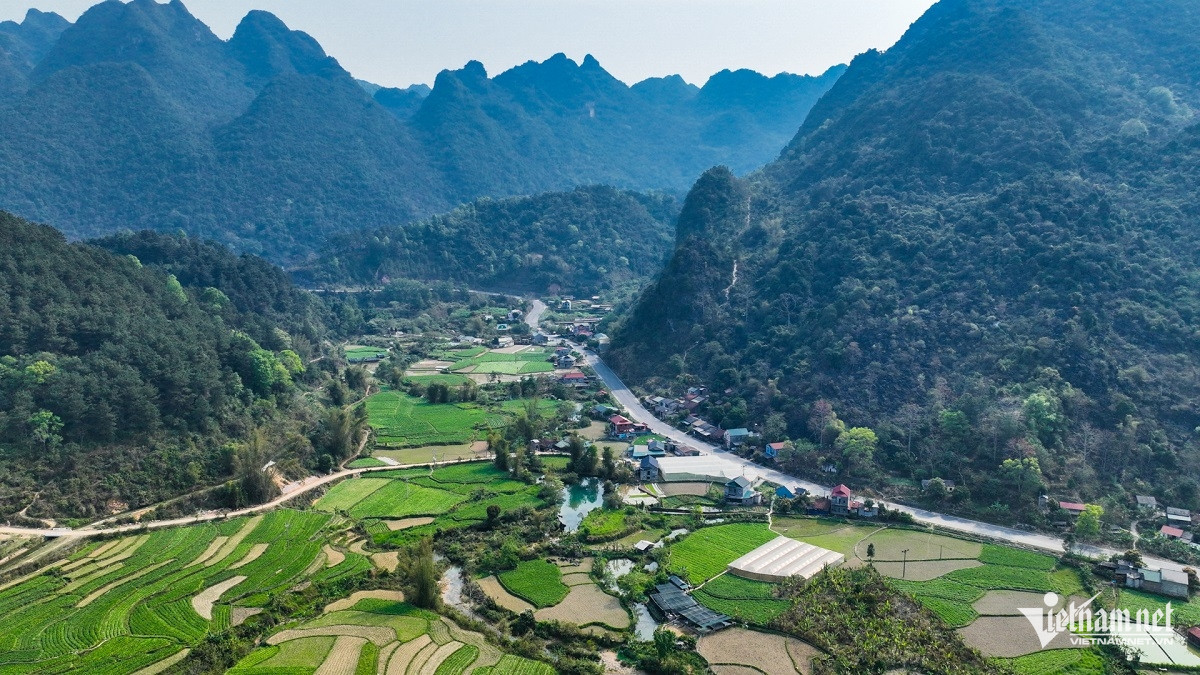
The poverty rate among ethnic minority communities has dropped by nearly 4% per year on average, helping to narrow the development gap between regions. Currently, 9 out of 49 provinces and cities have essentially achieved the objectives and targets set out in Program 1719.
At the National Conference on Ethnic and Religious Affairs held on March 31 in Khanh Hoa Province, Ha Viet Quan, Chief of the Coordination Office for the National Target Program on Socio-Economic Development in Ethnic Minority and Mountainous Areas (abbreviated as Program 1719), shared key updates on the program’s implementation results.
“The projects, sub-projects, and policy components under Program 1719 have significantly contributed to economic restructuring and poverty reduction. The average annual decline in poverty among ethnic minorities is nearly 4%, which plays a vital role in bridging the development gap between regions,” Quan stated.
To date, nine provinces and cities have basically fulfilled the goals and targets of the program. These include Hanoi, Vinh Phuc, Thai Nguyen, Quang Ninh, Khanh Hoa, Can Tho, Ninh Binh, Ba Ria - Vung Tau, and Bac Giang.
However, several provinces still face low levels of progress toward achieving these objectives, such as Lai Chau, Dien Bien, and Nghe An.
The two groups of goals that remain most challenging during implementation are: improving technical and social infrastructure in extremely disadvantaged communes (Zone III) and villages in ethnic minority and mountainous regions; and the work of resettlement and solving fundamental issues related to land for housing and production for local communities.
According to the Ministry of Finance, as of January 30, the total disbursed funding for the implementation of Program 1719 during the 2022–2024 period reached more than VND 48 trillion (approximately USD 1.94 billion), accounting for 72.6% of the allocated budget. Of this, nearly VND 30 trillion (USD 1.21 billion) in investment capital has been disbursed (85.6%), while around VND 18 trillion (USD 725 million) in recurrent expenditures has been disbursed (58%).
Local government reports show that by the end of 2024, provincial budgets had disbursed more than VND 9 trillion (USD 362.5 million), or 79.2% of their share. This includes over VND 7.6 trillion (USD 306 million) in investment capital (81.8%) and more than VND 1.4 trillion (USD 56.4 million) in recurrent spending (67.8%).
The disbursement performance varies widely among provinces. High-performing provinces include Ca Mau (95.4%), Tra Vinh (91.2%), Khanh Hoa (88.6%), Bac Giang (88.5%), Soc Trang (83.3%), and Thanh Hoa (82.6%). Lower disbursement rates are seen in Nghe An (56.9%), An Giang (60.3%), Bac Lieu (61.4%), Quang Ngai (62.8%), and Lai Chau (63.7%).
Program 1719 was approved by the National Assembly through Resolution 120/2020. Its goal is to promote socio-economic development in ethnic minority and mountainous areas, improve the material and spiritual well-being of local people, ensure sustainable poverty reduction, and narrow regional development disparities.
The program encompasses 10 projects, 14 sub-projects, and 12 key components. It is being implemented across 49 centrally-administered provinces and cities, covering 3,434 localities (communes, wards, and towns), including 1,551 Zone III communes (extremely disadvantaged), 210 Zone II communes, and 1,673 Zone I communes. It targets 13,222 villages and hamlets in extremely difficult ethnic minority and mountainous areas.
The program's support activities are aimed at ethnic minority households and individuals; poor and near-poor Kinh households in extremely disadvantaged areas; and businesses, cooperatives, and socio-economic organizations operating in these regions.
Binh Minh